Virtual Augmented Reality Showdown: Augmented vs. Virtual Reality
 Although both augmented and virtual reality strive to provide their users with immersive realities, they differ subtly and it’s these subtle differences that allow you to decide which of the two technologies (if any) stands a better chance of becoming a mainstream success. A virtual augmented reality showdown isn’t new, yet with ever-emerging improvements, it’s worthwhile to repeatedly challenge the two. While augmented reality uses digital information input to enhance real-life environments, virtual reality allows users to enter entirely fabricated realities where the virtual completely takes over.
Although both augmented and virtual reality strive to provide their users with immersive realities, they differ subtly and it’s these subtle differences that allow you to decide which of the two technologies (if any) stands a better chance of becoming a mainstream success. A virtual augmented reality showdown isn’t new, yet with ever-emerging improvements, it’s worthwhile to repeatedly challenge the two. While augmented reality uses digital information input to enhance real-life environments, virtual reality allows users to enter entirely fabricated realities where the virtual completely takes over. 
According to the official definition of virtual reality, the technology creates utterly artificial environments where users experience the newly-created world via sensory stimuli (sights or sounds) produced by a computer.
Augmented reality, by contrast, doesn’t aim to completely create an environment but to overlay digital information on an existing world. Ideally, the user isn’t able to distinguish between this digital information overlays and the real-life environment.
And while augmented reality and virtual reality are two completely separate concepts, their individuality is at times not precisely defined. While virtual reality attempts to block any stimuli coming from the real world, augmented reality tries to add to an already existing environment. Mixed reality, as a result of the two concepts, is therefore the mix of both augmented and virtual reality, where the digitized model of the real world is combined with computer-generated data.
Takeoff Potential
It’s clear that augmented and virtual reality technology has been improving significantly over the past years. So much so that tech giants have become big supporters of both concepts. While augmented reality designers are producing new apps constantly, virtual reality headsets are also making strides towards hitting the shelves. So it seems that the scene is set for both technologies to finally achieve the kind of success that has, thus far, only eluded them.  Back in the 1990’s and culminating with Second Life, virtual reality seemed to have the upper hand on augmented reality in the past. However, Google searches are now swaying towards augmented reality, suggesting that the general public is far more interested in augmented reality. Granted, it may just be the novelty of the term that is fueling this apparent increase, however, one thing is clear. Digitally enhanced real-world environments may be more appealing to the public than completely fabricated ones. Virtual reality and augmented reality have major potential but it remains to be seen how the public responds to one or the other.
Back in the 1990’s and culminating with Second Life, virtual reality seemed to have the upper hand on augmented reality in the past. However, Google searches are now swaying towards augmented reality, suggesting that the general public is far more interested in augmented reality. Granted, it may just be the novelty of the term that is fueling this apparent increase, however, one thing is clear. Digitally enhanced real-world environments may be more appealing to the public than completely fabricated ones. Virtual reality and augmented reality have major potential but it remains to be seen how the public responds to one or the other. 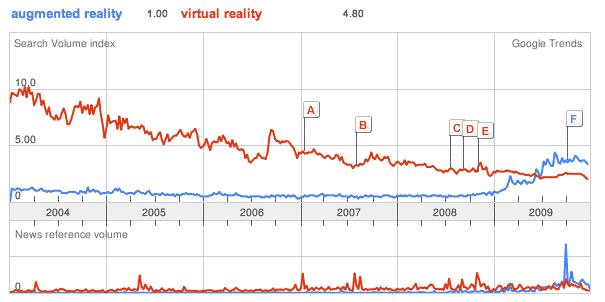
Virtual Reality and Augmented Reality: The Similarities and Differences
 Both virtual and augmented reality attempts to achieve a level of immersion where the user is no longer able to distinguish between his or her environment and the data provided by the system. Yet engaging in each type of reality is a completely different experience. With augmented reality, a user interacts with normal, real-life environments which are partly unmediated. This blended experience takes form when digital media objects or information are overlaid onto the space, object, building or place and as a result, there is a digital part of the user’s experience.
Both virtual and augmented reality attempts to achieve a level of immersion where the user is no longer able to distinguish between his or her environment and the data provided by the system. Yet engaging in each type of reality is a completely different experience. With augmented reality, a user interacts with normal, real-life environments which are partly unmediated. This blended experience takes form when digital media objects or information are overlaid onto the space, object, building or place and as a result, there is a digital part of the user’s experience.
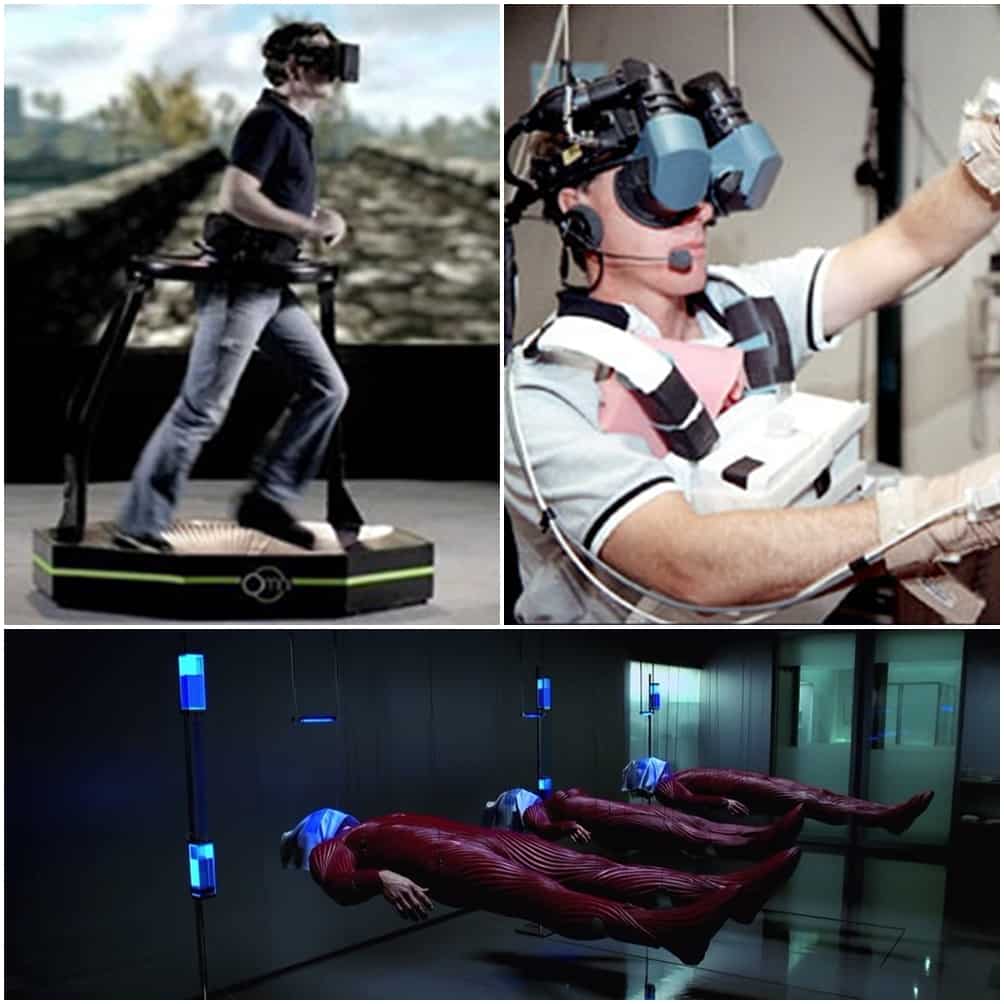 Virtual reality, on the other hand, has a user’s entire sensorium engaging with the digital objects found in a completely digital environment. The entire experience is digital, immersive, virtual, so that a user may have a first person view of an environment that is virtually constructed.
Virtual reality, on the other hand, has a user’s entire sensorium engaging with the digital objects found in a completely digital environment. The entire experience is digital, immersive, virtual, so that a user may have a first person view of an environment that is virtually constructed.
In order to achieve this sense of complete immersion, virtual reality requires more complex pieces of hardware. Early headsets had several disadvantages, from being cumbersome to causing nausea and motion sickness. From massive headsets (as they first appeared), engineers have managed to develop technology that is no longer heavy and difficult to work with. But most importantly, careful development has also made sure that motion sickness and nausea are no longer a component of the virtual reality experience.
Augmented reality, on the other hand, only requires everyday devices to function properly. There are, of course, augmented reality goggles, yet they do not attempt to focus a user’s entire sensorium towards the constructed environment. Smartphone augmented reality apps, browsers and viewers allow users to make good use of their display and camera in order to have an engaging and unique experience.
One reason why augmented reality may seem to have the upper hand is the fact what virtual reality is often only viewed as a video game accessory. And while the technology did emerge as an extension of gaming, it has since then significantly developed and become multi-faceted. Creating a virtual environment, a digital parallel world, is no easy task, and allowing people to communicate in this completely constructed world is a unique achievement.
“Most don’t spend the majority of their time playing games now, and I can’t see that changing with VR — gaming is not the end game,” Palmer Luckey, Oculus founder, notes.
Virtual Reality Gaming
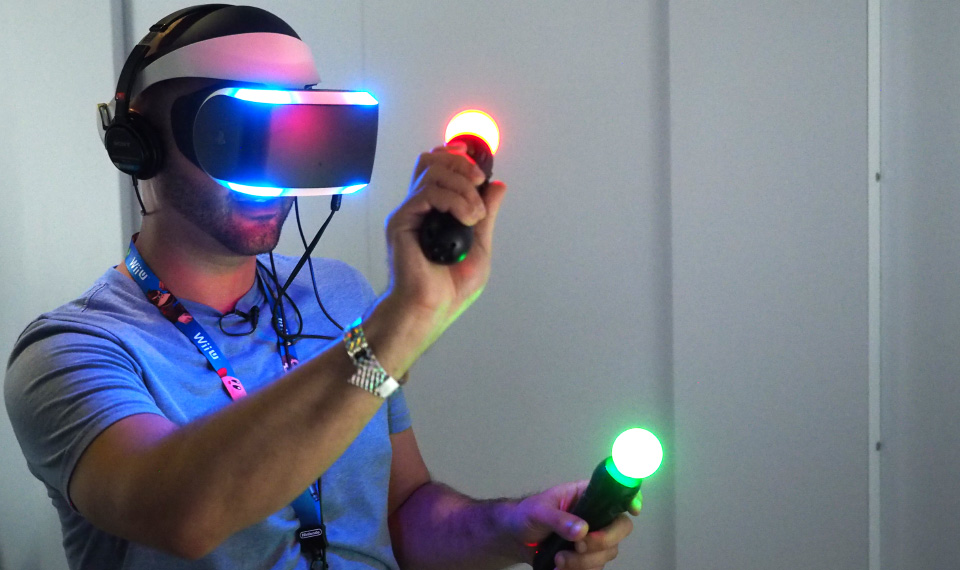 For game enthusiasts, the idea of becoming immersed in a 3D environment and interacting directly with that environment as opposed to a keyboard-mouse-screen interface is unparalleled. Game designers have spent thousands upon thousands of hours constructing virtual worlds where your avatar is able to interact with any other participant in the game. From fantasy to sports and sci-fi, the game palette is as diverse as your preferences:
For game enthusiasts, the idea of becoming immersed in a 3D environment and interacting directly with that environment as opposed to a keyboard-mouse-screen interface is unparalleled. Game designers have spent thousands upon thousands of hours constructing virtual worlds where your avatar is able to interact with any other participant in the game. From fantasy to sports and sci-fi, the game palette is as diverse as your preferences:
Virtual Reality Worlds
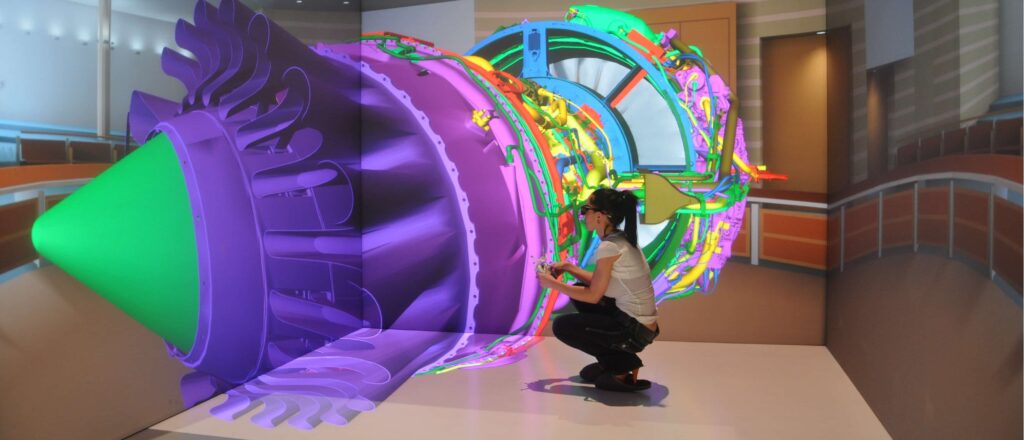 While you would expect that such virtual worlds would be used exclusively for gaming purposes, the truth is that virtual reality worlds may also be used for educational and research purposes. From virtual classrooms to independence war reenactments, virtual worlds are a great way to allow learning to be based on direct interaction while ensuring a safe environment. Some in-game virtual reality worlds include:
While you would expect that such virtual worlds would be used exclusively for gaming purposes, the truth is that virtual reality worlds may also be used for educational and research purposes. From virtual classrooms to independence war reenactments, virtual worlds are a great way to allow learning to be based on direct interaction while ensuring a safe environment. Some in-game virtual reality worlds include:
- Second Life
- The Sims
- IMVU
- Active Worlds

Difficulties in Approach and Traction for Virtual and Augmented Reality
Any new type of technology may be a bit difficult to accept, especially when the public is accustomed to certain types of products. And while augmented reality still plays on known territory and the fact that the public isn’t completely disconnected from what they consider familiar ground, virtual reality is a bit more difficult to implement. And although this alone may be hard enough, virtual gaming has many more obstacles to overcome. 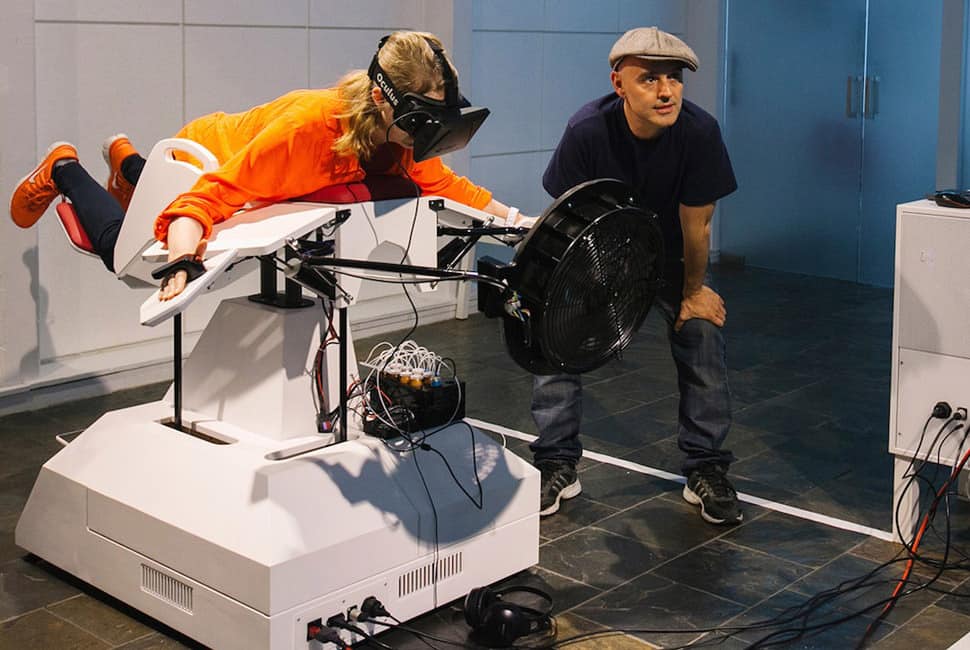 On the one hand, virtual reality technology developers have difficulty in establishing “true presence”. Strapping on a Virtual Reality headset allows users to enter digital environments but often doesn’t allow the user to interact or even see his real-life hands. This disconnect may be too difficult to accept for the general public.
On the one hand, virtual reality technology developers have difficulty in establishing “true presence”. Strapping on a Virtual Reality headset allows users to enter digital environments but often doesn’t allow the user to interact or even see his real-life hands. This disconnect may be too difficult to accept for the general public.
Another obstacle is the need for completely new hardware in order to be able to enter this virtual reality world. While early adopters and 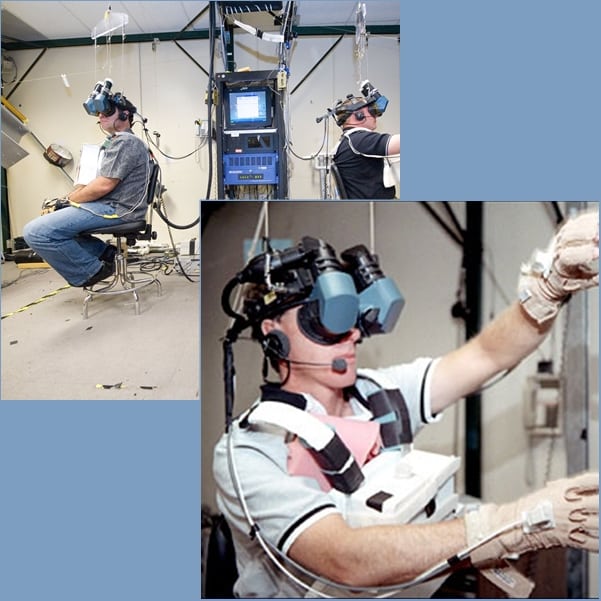 tech-savvies can’t wait to invest several thousands of dollars in the required equipment, the general pubic won’t necessarily see the need for such extravagant spending. Here is where Sony has an upper edge on other VR developers.
tech-savvies can’t wait to invest several thousands of dollars in the required equipment, the general pubic won’t necessarily see the need for such extravagant spending. Here is where Sony has an upper edge on other VR developers.
The company’s strategy is to ensure VR adoption among its loyal customers, who already are PlayStation owners. Providing an experience which marries their gaming consoles to VR technology instead of competing with other VR technology producers may just be the way to go.
“Getting millions of people to understand how amazing VR experiences are is a big challenge,” Shuhei Yoshida, Sony Corp president said. Instead of adding additional steps to an already complicated task, Sony hopes to offer its customers a simple, accessible gameplay experience. And with PS4’s being the same for every customer, developers are able to ensure that the virtual worlds and games they create are great for all those who try them out. 
And although gamin has somewhat of an anti-social reputation, it may just be that virtual and augmented reality will be able to overcome this perception. Each technology has its place and its distinct function. While gamers wish to be completely immersed in virtual realities, other users wish to have context added to the world around them.
So it’s really a question of whether you’re in Spain and can’t read the signs (this is where augmented reality quickly translates them from Spanish to English)or wish to be taken to Spain by virtual reality technology.